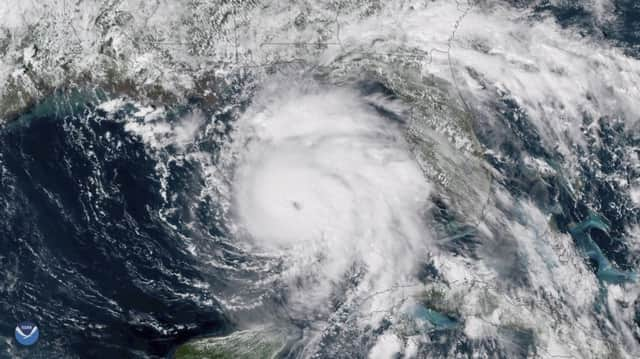Hurricane Michael batters Florida as residents flee '˜historic' storm surge


It was one of the most intense hurricanes ever to hit the U.S. mainland and the most powerful one on record to menace the panhandle – a roughly 200-mile stretch of fishing towns, military bases and beaches.
The hurricane battered the coastline with sideways-blown rain, powerful gusts and crashing waves. Explosions apparently caused by transformers could be heard.
Advertisement
Hide AdAdvertisement
Hide AdFederal Emergency Management Agency administrator Brock Long said: “The window to evacuate has come to a close.”
The storm quickly sprang from a weekend tropical depression, becoming a furious category four hurricane by early yesterday, up from a category two less than a day earlier.
More than 375,000 people up and down the Gulf Coast were urged to evacuate, but emergency authorities lamented that many people ignored the warnings.
Diane Farris, 57, and her son walked to a high school-turned-shelter near their home in Panama City to find about 1,100 people crammed into a space meant for about half as many.
Advertisement
Hide AdAdvertisement
Hide AdHurricane-force winds extended up to 45 miles from Michael’s center. Forecasters said rainfall could reach up to a foot and the life-threatening storm surge could swell to 14 feet.
The storm appeared to be so powerful it is expected to remain a hurricane as it moves over Georgia today. Forecasters said it would unleash damaging wind and rain all the way into the Carolinas, which are still recovering from Hurricane Florence’s epic flooding.
Meteorologists watched satellite imagery in complete awe as the storm intensified.
“We are in new territory,” National Hurricane Center Meteorologist Dennis Feltgen wrote on Facebook. “The historical record, going back to 1851, finds no category four hurricane ever hitting the Florida panhandle.”
Advertisement
Hide AdAdvertisement
Hide AdScientists say global warming is responsible for more intense and more frequent extreme weather such as storms, droughts, floods and fires. But without extensive study, they cannot directly link a single weather event to the changing climate.
Hours ahead of landfall, seawater was already lapping over the docks at Massalina Bayou near downtown Panama City. Knee-deep water was rising against buildings in St Marks, which sits on an inlet south of Tallahassee, Florida’s capital.
Huge waves pounded the white sands of Panama City Beach, shooting frothy water all the way to the base of wooden stairs that lead to the beach.
More than 5,000 evacuees sought shelter in Tallahassee, which is about 25 miles from the coast.
Evacuations spanned 22 counties from the panhandle into north-central Florida.